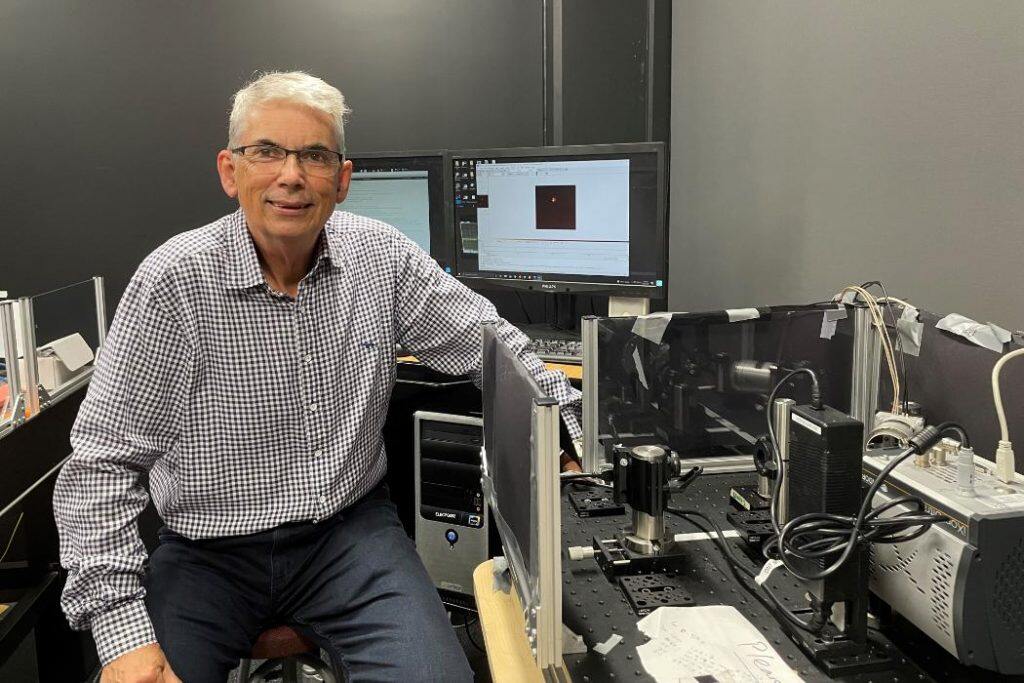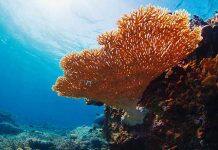Satellites are increasingly being released beyond our atmosphere, but what happens if we lose communication with a satellite and can’t see it to understand why? University of Canterbury (UC) researcher Associate Professor Stephen Weddell says this poses a threat to the very communication technologies we use every day.


Electrical engineer Associate Professor Weddell is leading the Computational Design and Adaptation (CDA) Research Group on a project that is significantly improving the image quality of low-Earth orbiting satellites and space debris. The group received a Royal Society of New Zealand Marsden Fund in 2019 and are finding a way to improve the clarity of objects beyond Earth’s atmosphere.
Associate Professor Weddell says that they have applied a technique called adaptive optics that controls and reduces the effects of turbulence due to our atmosphere so we can take better images of satellites while they orbit around Earth and have better visibility of their location and possible condition.
“We’re working to minimise distortion between us and the object through the thin layers of atmosphere that surrounds the Earth.”
“You could think of the atmosphere as ‘foggy air’ in a way – like a smudge on reading glasses which makes an object appear distorted and challenging to see details, clearly. Once that gets cleared up, we can see the object very well,” says Weddell.
“Adaptive optics basically clears a cylinder of space between us and the object through the atmosphere and is particularly useful if we’ve lost communication with the satellite for whatever reason and want to study a detailed image of it to see why. For example, a solar panel may not have deployed correctly.”
The team are using this technique to correct images in real time on the back of a telescope and have found that it can improve clarity by up to 60%.
“We recently used adaptive optics on telescopes at Mt John and got some remarkable images with it – the detail is fantastic,” says Associate Professor Weddell.
He says that adaptive optics will provide visual information to protect major assets, such as satellites that provide us with internet connectivity and other forms of communications, such as radio, television, and satellite phones.
“By using these instruments on powerful telescopes, we can increase our knowledge about a spacecraft’s condition and position. If we didn’t have satellites we’d be back in the dark ages where we relied upon bouncing signals off the ionosphere to get information around the world or on cables laid on the seabed between continents.”
“Satellites have significantly transformed our lives, but there is a threat that with more satellites being released into Earth’s orbit, the risk of more space debris taking down functioning satellites and leading to a loss of communications on Earth is becoming greater by the day.”
He says the group want to help maintain the satellite network as much as possible, and that the ability to image spacecraft more clearly using adaptive optics will help.
“Satellite collisions would create more debris, and this is referred to as the ‘Kessler syndrome’. We want to minimise these threats and provide accurate information back to people like the European Space Agency and other organisations who are monitoring these satellites.”
Associate Professor Weddell acknowledges that much of this research relies on reasonably mature technology, but the UC team have developed and characterised an adaptive optic system for New Zealand’s largest telescopes at the University of Canterbury Mt. John Observatory, and their team are the first in New Zealand to be able to develop this technique and apply it to satellites.
“This research is really important as it is providing capability within New Zealand, and an ability to share that information, particularly with our strong collaborations around the world.”
The research project is funded by a Royal Society of New Zealand Marsden Fund from 2019 – 2022. Find the research profile here.
Associate Professor Weddell is the Principal Investigator of the CDA group, which currently supports a Postdoctoral Fellow, four senior academics, and five postgraduate students. The group has strong international collaborations with specialist research groups in Australia (UNSW Space), European Southern Observatories (ESO) in Germany, and the Instituto de Astrofísica de Canarias (IAC), Spain.








































